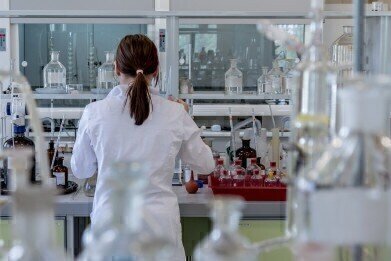Laboratory Products
A Guide to Biosafety for COVID-19 Laboratory Work
Feb 21 2021
The rapid and continuing spread of coronavirus over the last 12 months has seen a concerted effort from across the scientific community to discover effective methods of containing, diagnosing and treating the disease. By its very nature, this research involves working with infectious and potentially deadly samples and specimens from individuals who have or may have the virus.
As a result, it’s imperative that all scientific and medical professionals who handle these substances follow rigorous protocols to mitigate risks and maximise their safety. For that reason, the World Health Organisation (WHO) periodically publishes their guidance on best practices in the sector. The most recent updated document covers all aspects of biosafety when working with COVID-19 samples in a laboratory environment.
Risk assessments
Prior to the handling of any COVID-19 laboratory work, a thorough risk assessment should be carried out to determine potential problems and analyse the capacity to overcome them. This is standard practice in all decontamination methods used for biosafety cabinets when handling any kind of substance in the lab, and as such should not pose a novel challenge for researchers investigating coronavirus.
In particular, the risk assessment should be institutional, focusing both on the environment in which the work is to take place and the personnel who will be carrying it out. The laboratory should be thoroughly assessed to ensure it is fit for purpose and it is the appropriate environment should be allocated to the task at hand; for example, propagative work must be conducted in a contained lab with inward airflow only. All staff should be trained and competent in all relevant technical and safety procedures.
PPE
Personal protective equipment (PPE) must be worn at all times when in the vicinity of the COVID-19 samples so as to eliminate the risk of droplet or airborne transmissions. Droplet precautions must be undertaken for all common sample collection types, including nasopharyngeal and oropharyngeal swabs. Airborne precautions may be necessary for other types of sample collection depending upon the exact circumstances. Safety protocols should be deferred to in all situations.
The minimum PPE that must be worn when abiding by droplet precautions includes a medical quality face mask, disposable gloves, eye goggles and a gown. For airborne precautions, the researcher in question should wear the above items of PPE, as well as a fit-tested particulate respirator to preclude inhalation of any contaminated particles.
Surfaces
It should be remembered if untreated, the disease has been known to survive on surfaces for hours or even days at a time. Therefore, researchers should investigate and adopt ways to limit the spread of the virus through viricidal surface contamination. There are a number of different disinfectant solutions available to tackle this problem and the choice of which to use it at the institution’s discretion.
Whichever disinfectant is used, the handlers should take care to pay attention to the recommended contact time, disinfectant dilution quantities and expiry dates of the substances involved. All procedures should be performed in a manner that discourages the generation of droplets or aerosols, but adequate precautions must be taken to isolate and neutralise any such harmful residues should they occur.
Digital Edition
Lab Asia 31.2 April 2024
April 2024
In This Edition Chromatography Articles - Approaches to troubleshooting an SPE method for the analysis of oligonucleotides (pt i) - High-precision liquid flow processes demand full fluidic c...
View all digital editions
Events
Apr 28 2024 Montreal, Quebec, Canada
May 05 2024 Seville, Spain
InformEx Zone at CPhl North America
May 07 2024 Pennsylvania, PA, USA
May 14 2024 Oklahoma City, OK, USA
May 15 2024 Birmingham, UK



.jpg)














